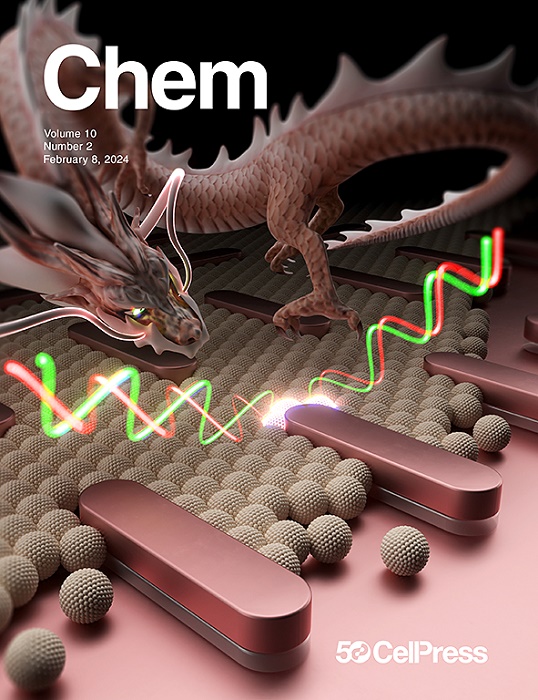多面体编织
IF 19.6
1区 化学
Q1 CHEMISTRY, MULTIDISCIPLINARY
引用次数: 0
摘要
通过合理配体工程的可编程设计和拓扑复杂结构的合成,为探索化学、物理和生物学中纠缠的影响和潜在应用开辟了新的途径。在这一期的Chem中,Fujita, Sawada和同事扩展了折叠和组装方法,构建了一个具有60个交叉点的m60l60纠缠衣壳。本文章由计算机程序翻译,如有差异,请以英文原文为准。
Weaving in polyhedra
The programmable design and synthesis of topologically complex architectures through rational ligand engineering open new avenues for exploring the effects and potential applications of entanglements across chemistry, physics, and biology. In this issue of Chem, Fujita, Sawada, and co-workers extend the folding-and-assembly approach to construct an M60L60-entangled capsid featuring 60 crossings.
求助全文
通过发布文献求助,成功后即可免费获取论文全文。
去求助
来源期刊

Chem
Environmental Science-Environmental Chemistry
CiteScore
32.40
自引率
1.30%
发文量
281
期刊介绍:
Chem, affiliated with Cell as its sister journal, serves as a platform for groundbreaking research and illustrates how fundamental inquiries in chemistry and its related fields can contribute to addressing future global challenges. It was established in 2016, and is currently edited by Robert Eagling.
 求助内容:
求助内容: 应助结果提醒方式:
应助结果提醒方式:


